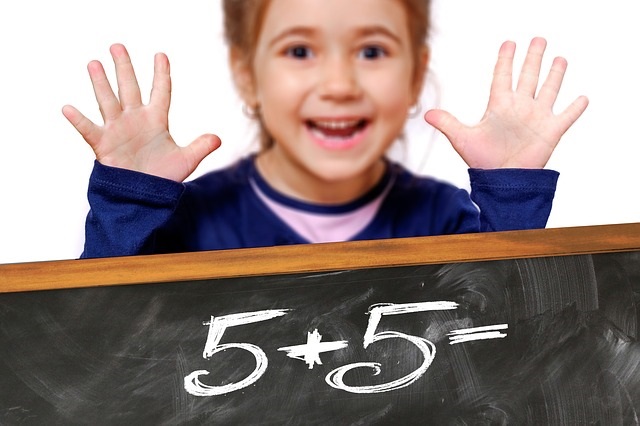Table of Contents
- Concrete, representational and abstracts models of math.
- Questioning used in mathematics.
- Feedback
- Teaching Math Vocabulary
- Building Math Fluency
- Error Analysis
This next section contains excerpts from the National Center on Intensive Intervention. (2016). Principles for designing intervention in mathematics. Washington, DC: Office of Special Education, U.S. Department of Education and is in the pubic domain.
 The purpose of this chapter is to provide brief explanations of practices that can be implemented when working with students in need of intensive intervention in mathematics.
The purpose of this chapter is to provide brief explanations of practices that can be implemented when working with students in need of intensive intervention in mathematics.
Special education instructors, math interventionists, and others working with students who struggle with mathematics may find this guide helpful. The strategies presented in this guide should be used in conjunction with teaching guides developed for specific mathematical concepts. Specific topics covered include the following:
Explicit, Systematic Instruction (aka Direct Instruction)- Chapter 4
•Effective Questioning in the math classroom (questioning was introduced in chapter 9)
•Concrete, Representational/Visual/Pictorial, Abstract/Symbolic Models
•Teaching Mathematical Vocabulary and Symbols
•Fluency Building
•Error Analysis
Concrete, Representational/Visual/Pictorial, and Abstract/Symbolic Models
Using multiple representations to teach mathematics allows students to understand mathematics conceptually, often as a result of developing or “seeing” an algorithm or strategy on their own. By building strong conceptual understanding, students are able to better generalize skills and understand algorithms (Gersten et al., 2009; Jones, Inglis, Gilmore, & Evans, 2013; Miller & Hudson, 2007). Moving through each phase is essential for every skill area, not just for early foundational skills (Jayanthi et al., 2008; National Mathematics Advisory Panel, 2008; Stein, Kinder, Silbert, & Carnine, 2005; Woodward, 2006). A description of the three phases follows.
1. Concrete: In this phase, students use three-dimensional manipulatives to solve problems and to gain a better conceptual understanding of a concept. Examples of manipulatives include counting bears, snap cubes, base-10 blocks, real or plastic money, clocks, fraction tiles, geoboards, Algeblocks, algebra tiles, and others. It is helpful to use a variety of manipulatives (if possible) to teach concepts so that students can generalize the concept being taught. Using an assortment of manipulatives is not always possible, however; some concepts can only be taught using a specific manipulative. It is important to note that although students may demonstrate proper use of a manipulative, this does not mean that they understand the concepts behind use of the manipulative. Explicit instruction and student verbalizations, such as explaining the concept or demonstrating use of the manipulative while they verbally describe the mathematical procedure, should accompany all manipulative use.
2. Representational/Visual/Pictorial: Students use two-dimensional pictures, drawings, or diagrams to solve problems. These pictures, drawings, or diagrams may be given to the students, or they may draw them when presented with a problem. These representations should be used to connect and solve the same concepts previously taught using concrete objects. Representational models also may be presented virtually through websites or tablet applications. With a virtual representation, students move the image with a mouse or with their hands.
3. Abstract/Symbolic: During this phase, students are expected to solve problems through the use of numbers and symbols rather than with the use of concrete objects or visual representations. Students are often expected to memorize facts and algorithms as well as to build fluency.
Following is an example that demonstrates use of the three phases to solve the problem 4 + 5:



